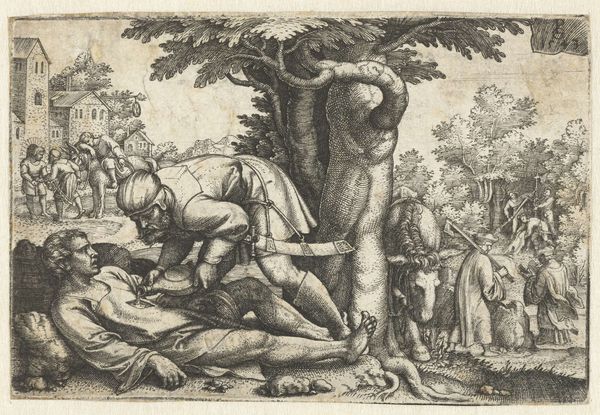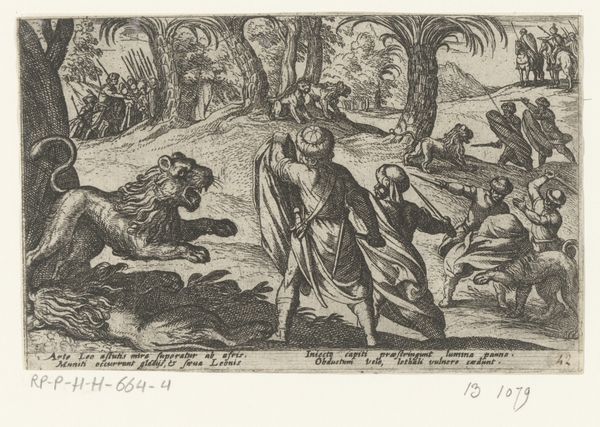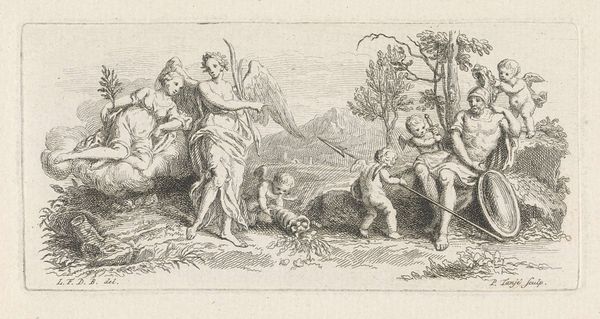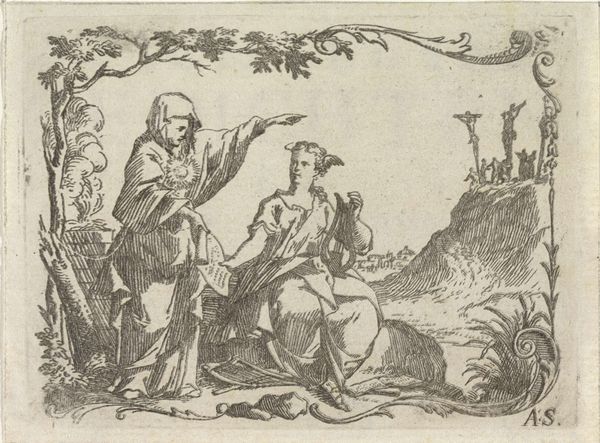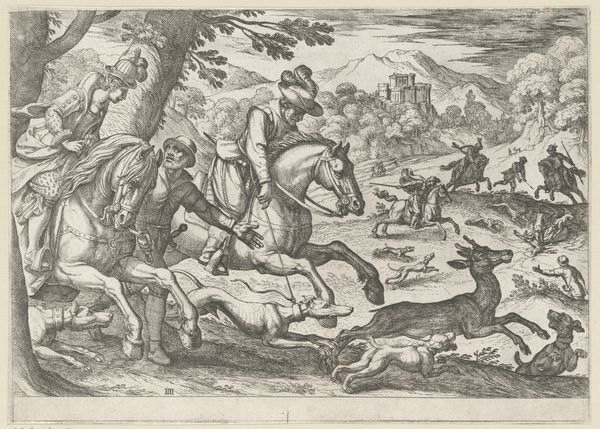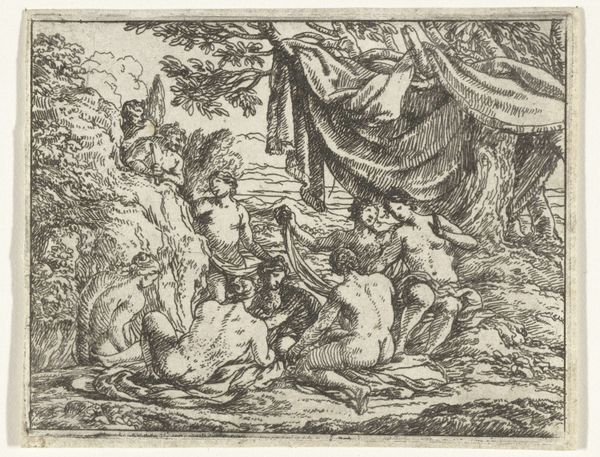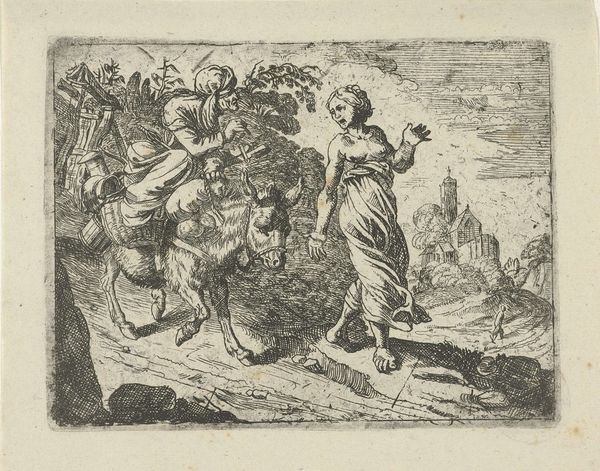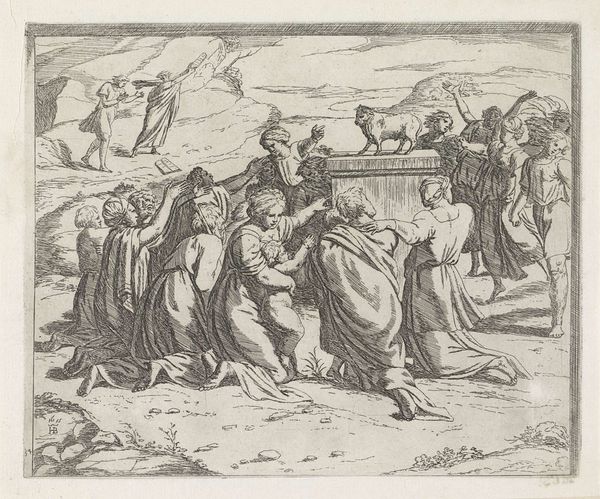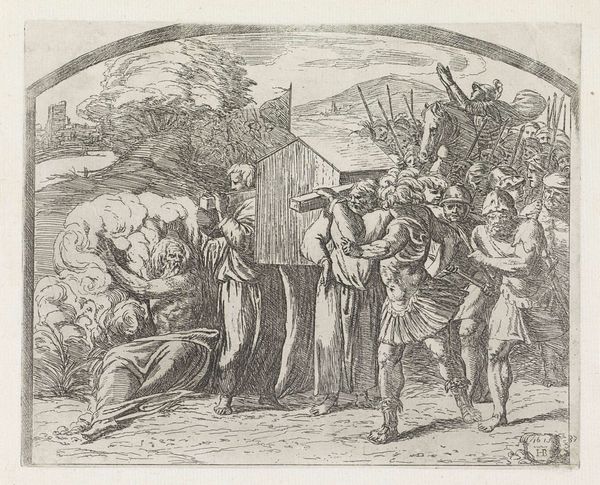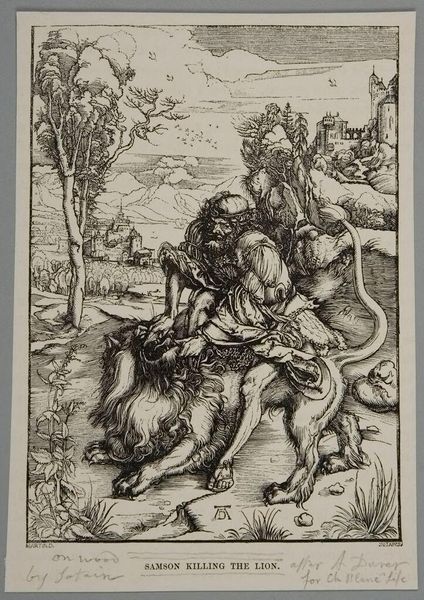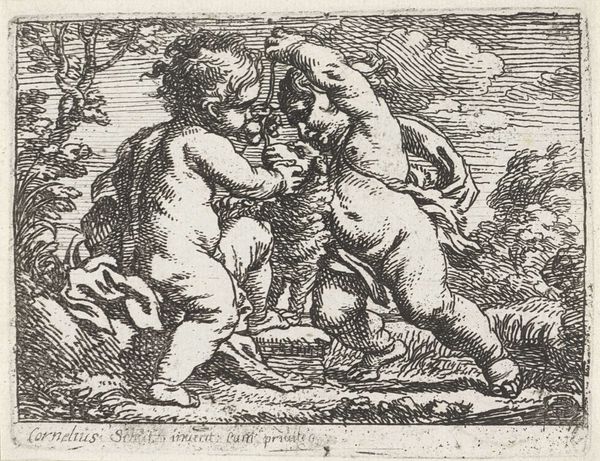
drawing, print, intaglio, engraving
#
drawing
#
light pencil work
#
baroque
# print
#
pen sketch
#
intaglio
#
pencil sketch
#
figuration
#
personal sketchbook
#
sketchwork
#
ink drawing experimentation
#
pen-ink sketch
#
sketchbook drawing
#
pencil work
#
history-painting
#
nude
#
sketchbook art
#
engraving
Dimensions: height 146 mm, width 175 mm
Copyright: Rijks Museum: Open Domain
Curator: Borgianni’s "Adam and Eve after the Fall," from 1615, rendered in engraving, presents such a stark image. What are your initial thoughts on it? Editor: It’s quite different from the idyllic depictions I’ve seen before. It feels raw, almost…unfinished. The figures are muscular, Adam looks burdened and Eve seems resigned. What do you see in this piece? Curator: Exactly. The roughness challenges the glorification we often see. Borgianni confronts the consequences of the Fall not as a singular moment, but as an ongoing reality of labor, pain, and the family structure. This image isn't just about theology; it speaks to the economic realities and gender roles that became cemented. What does the figures' body language convey to you, in light of their new roles? Editor: There's a sense of struggle, definitely. Adam with his back bent looks almost animalistic. But what about the children – are they meant to evoke a sense of innocence lost, or something else? Curator: Their inclusion underscores the cyclical nature of their predicament – their progeny are thrust into a world of scarcity and hard labor. And note that only the male child interacts with Adam. It is as if we see a consolidation of the patriarchy right there. The visual language is incredibly charged. This representation pushes back against purely celebratory or decorative treatments of biblical subjects. What would you say is the core message here? Editor: That suffering and work are the unavoidable legacy, maybe? That innocence, once lost, cannot be recovered and instead translates to the family nucleus and consolidation of labour division between men and women. Curator: Precisely. It encourages a critical reflection on the legacies of religious doctrine and its impact on the lived experiences of future generations and existing power structures. A truly provocative piece. Editor: Definitely gives you a lot to think about beyond just the biblical story.
Comments
No comments
Be the first to comment and join the conversation on the ultimate creative platform.
